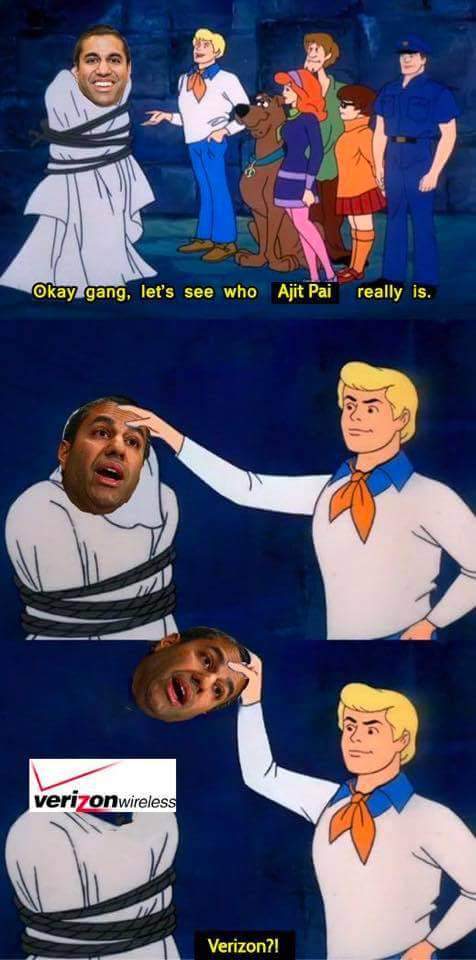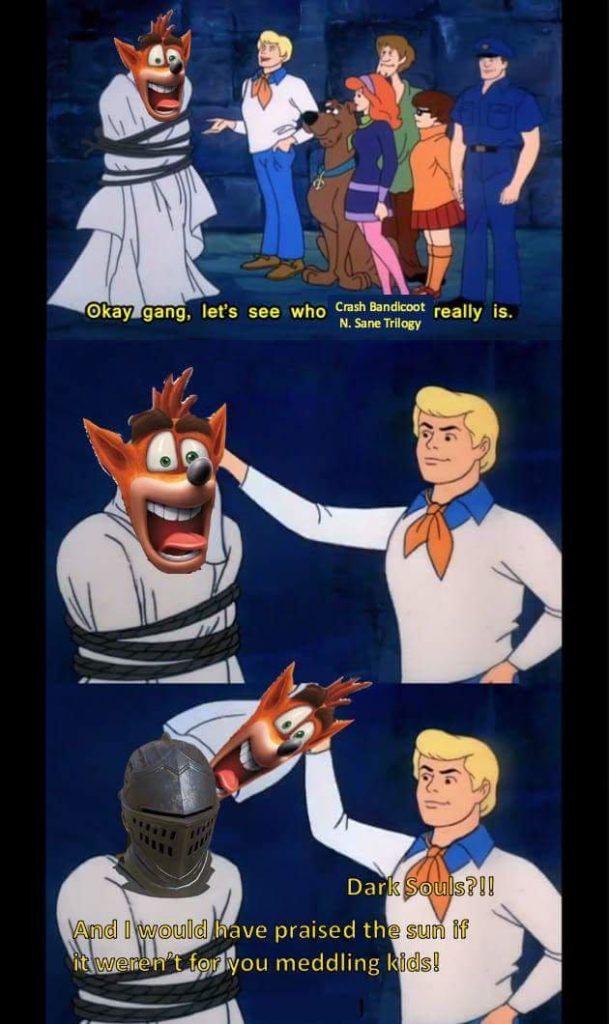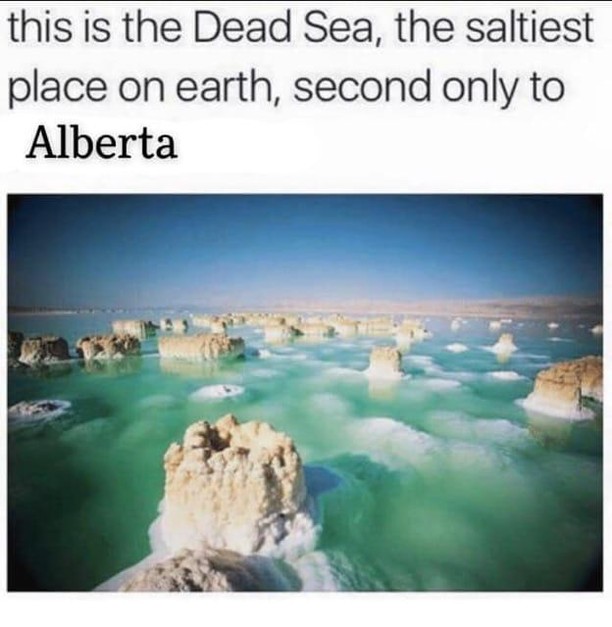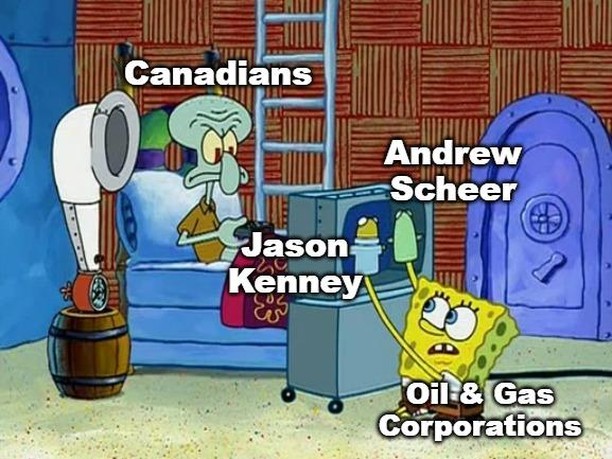By Elliott Klein

About and origin
This meme employs the “Let’s See Who This Really Is” meme template. The template uses stills from an episode of the popular television series Scooby-Doo, Where Are You! in which mystery solver Fred unmasks a suspect. The culprit behind strange activities that had been occurring is thus revealed—a trademark moment in the resolution of each episode in the series.
In this instance, the meme employs “Western separatism” as the disguised character and “oil company propaganda” as the culprit revealed by Fred when he removes the mask. These terms reference a surge in social media discussion and mainstream media coverage surrounding Western Canadian separatism—or, “Wexit”—that immediately followed the 2019 Federal Election. This meme implies that the surge, as well as the mere possibility that the idea could be considered, were due to propaganda backed, generated, and promoted by oil companies who have significant interests in natural resource and environmental policies that affect Western Canada.
Context and circulation
This meme was encountered on the North 99 Instagram account. On its website, North 99 describes itself as “an independent movement of hundreds of thousands of Canadians working to transform Canada for the many, not the richest few” via “progressive policies and ideas.” Its social media accounts share a mix of memes and text-based advocacy news-style material. While the organization does not explicitly endorse any political party or leader, it is clearly anti-Conservative, as is evident in the tone and content it uses in discussing federal and provincial Conservative politicians.
The meme was shared on October 25th, four days after the 2019 Canadian Federal Election and received 332 likes. In the hours and days following the election, news media reported that Liberal Party candidates had failed to retain or win any seats in the province of Alberta, using this fact to point to signs of division and polarization with Canada. The term “Wexit”—“Western exit”—was used to discuss a potential Western Canadian separation. This meme was shared to place the blame for Wexit talk on oil companies, though it does not reference any specific evidence to support this claim.
It is unclear whether or not the meme was created by North 99 or someone else. The organization shared dozens of memes during the election campaign and was inconsistent in identifying original content or attributing other meme creators. Interestingly, following the election, North 99 began to post more memes to their Instagram page which were clearly original content as they bear a North 99 watermark.
Analysis
This meme attempts to make a persuasive argument to its viewers by conveying a relationship between oil companies and the prospect of Western Canadian separatism. The imagery depicts the entities in question as protagonist and antagonist with a clear difference in portrayed moral qualities: a villain and a hero. Precise and straightforward language is used to make clear the suggestion the meme is making. Associating oil companies with the masked culprit implies that such companies are ill-meaning criminals. When Scooby-Doo character Fred lifts the ghost mask off the suspect, it is implied that oil companies are hiding behind other identities to spread ideas and viewpoints that would support their business goals.
In other memes based on this template, the villain is depicted with a head. It is not clear why the villain does not have a head in this instance – maybe the meme creator felt that no human face would be intrinsically linked to the Canadian oil industry by the meme’s audience. Fred is not explicitly identified, and this is likely intentional. At first glance, Fred can be read as representing left-wing and progressive groups, parties, and politicians. They are conceived as confident truth-seekers who strive for justice, expose secret links and connections, and work to improve life for others, as the Mystery Inc. team does in Scooby-Doo. Additionally, as Fred is left unlabelled, the viewer can more easily assume the role of Fred and view themselves as a truth-seeker and a part of the social justice movement that North 99 aligns itself with. Viewers who make this connection are more likely to follow North 99’s account, which would be to the organization’s benefit in growing its audience.
The meme uses Scooby-Doo revelation imagery in an attempt to produce emotional responses of distrust and disgust toward oil companies. North 99 opposes the use of fossil fuels and advocates for climate protection and renewable energies. By activating the aforementioned emotional responses, the organization hopes to build or reinforce a collectively held opinion and stance towards the Canadian oil industry among a like-minded audience. The dramatization in this meme reduces the credibility of would-be separatists and right-wing Western Canadians, even parodying the very prospect of a separated Western Canada. It thus downplays the viability of Western separatism while inferring that viewers should be keeping an eye on the possibly underhanded behaviours of oil companies.
The meme continues in North 99’s tradition of posting memes that cast doubt on the legitimacy, credibility, character, and values of federal and provincial Conservative parties and politicians, without explicitly mentioning them. It makes a visual attack by associating the ghost-disguised culprit with oil companies, assigning them responsibility for the surge in Western Separatism discussion.
By using imagery from Scooby-Doo and associating the revelation symbolism with political events, the topic and argument North 99 is presenting can be more easily and quickly understood by a wider audience. The symbolism also allows the comedic elements of the television series to add a lightness and immediacy to the argument that a standard text post would perhaps not be able to include so easily.
Since the meme uses very few words and relies mostly on visuals, North 99 is able to make a controversial and negative argument without provoking demands for accountability or evidence to support its claims. The imagery is powerful in its ability to create an implication of guilt without making an outright accusation in writing, thus more easily bypassing potential tests for objectivity, clarity, and precision by its viewers.
References
Original Instagram post of this meme: https://www.instagram.com/p/B4DrQjKgDSf/
“Let’s See Who This Really Is” article on Know Your Meme: https://knowyourmeme.com/memes/lets-see-who-this-really-is
North99: https://north99.org
Daniel Schill, “The Visual Image and the Political Image: A Review of Visual Communication Research in the Field of Political Communication,” Review of Communication 12, no. 2 (April 2012): 118–42.





